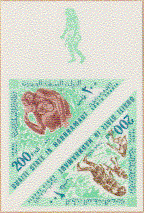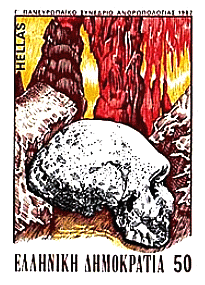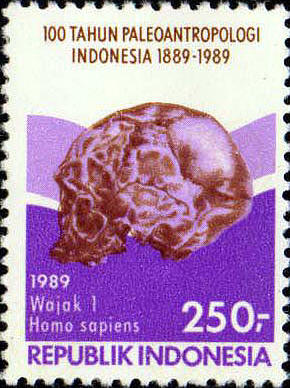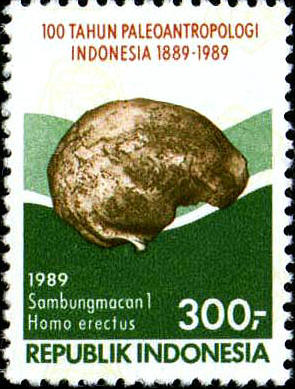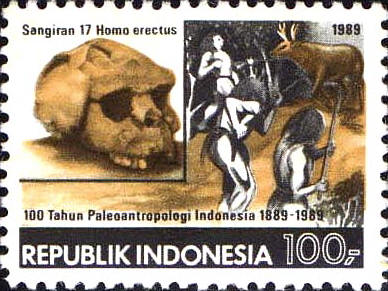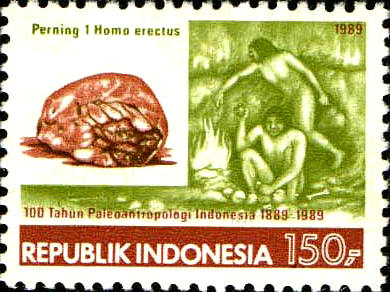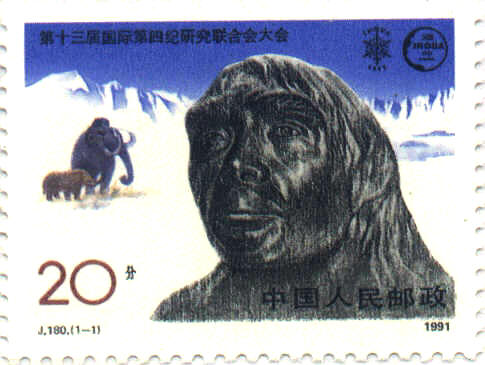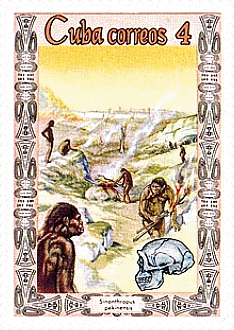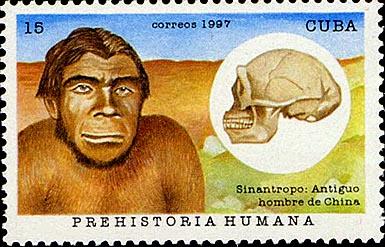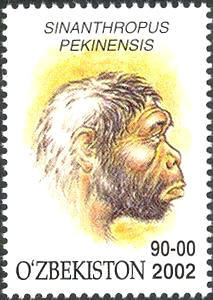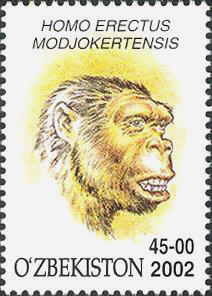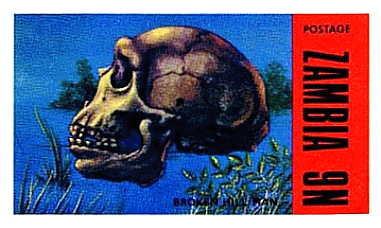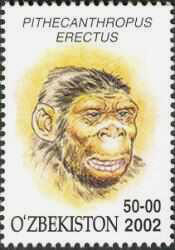Homo erectus
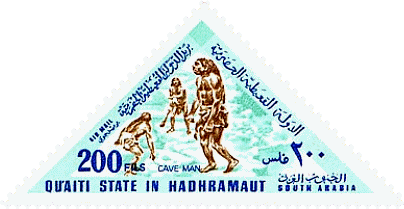
Hadramaout
1971
Homo (Pithencathropus) erectus
Homo erectus
(Dubois, 1892)
To understand what we
mean today by "Homo erectus", some history of paleoanthropological
thought is needed. The first early human fossil found outside of Europe was the
Trinil 2 fossil skullcap from the Solo River in Java, pictured to the right. The
fossil was placed in the species Pithecanthropus erectus by its
discoverer Eugene Dubois. Almost 40 individuals have been recovered from Java to
this day, roughly equivalent to the number of fossils found at the caves of
Choukoutien in China. The Choukoutien fossils found were originally assigned the
species name Sinanthropus pekinensis. It was not until the 1950's that
Ernst Mayr proposed that all of the specimens from these two roughly
contemporaneous locales, along with others localities from Europe and Africa,
represented a single species, Homo erectus. Since the 1950's, however,
the early African populations of what Mayr termed Homo erectus have once
again been split into a separate species Homo
ergaster![]() .
.
Homo erectus exhibits many features particular to the species, including a long skull shaped with thick cranial walls. The back of the skull is marked with a protruberance known as a transverse torus. Over the eyes is a large and prominent browridge, or supraorbital torus, which joins the rest of the frontal bone at a depression called the sulcus. Cranial capacities of Homo erectus average around 1000cc, which is far greater than earlier australopiths and even early Homo. The dentition of Homo erectus is nearly identical to modern humans, although the cheek teeth do remain larger, and the mandible is generally more robust.
The species Homo erectus is thought to have diverged from Homo ergaster populations roughly 1.6 million years ago, and then spread into Asia. It was believed that Homo erectus disappeared as other populations of archaic Homo evolved roughly 400,000 years ago. Evidently, this is not the case. Recent studies into the complicated stratigraphy of the Java Homo erectus sites have revealed some surprising information. Researchers have dated the deposits thought to contain the fossils of H. erectus near the Solo River in Java to only 50,000 years ago. This would mean that at least one population of Homo erectus in Java was a contemporary of modern humans (Homo sapiens).
![]()
PHILATETY
HADHRAMAUT
1971

imperfored
CAMBODJA
CUBA
1967
GREECE
INDONESIA
1989
Kenya
1966
PALAW
![]() Homo
(Sinanthropus pekinensis) erectus
Homo
(Sinanthropus pekinensis) erectus
Homo erectus pekinensis Black & Zdansky, 1927
China
1991
Cuba
1967
1997
UZBEQUISTAN
Homo (Sinanthropus pekinensis) erectus
10.May.2002
Homo erectus modjokertensis by Koenigswald, 1936
Homo erectus modjokertensis
10.May.2002
YEMEN
ZAMBIA
UZBEQUISTAN
Homo (Pithecanthropus) erectus
![]()
BIOLOGY:
The oldest flossies date of have a million and six hundred thousand years found in Eastern Turkana in the Kenya, being for Just-fond times related as pertaining to the a Turkana. A million of years later the Homo erectus and its sister, the Homo heidelbergensis, occupy all the Eurasia, since the coast of the Atlantic Ocean, Occident, until the a China and Java, the east.
The entrance in scene of erectus total introduces new characteristics in the evolution of the man, that had transmitted to our ancestor the capacity and the energy that had made them to expand for the first time is of Africa.
The cold Climate and the environment hardest prevalence the north had more compelled the man to use the fire and to dress well suitable clothes to the body, to conserve itself hot in the Winter.
Physically, erectus was more similar to the man of whom the habilis. The biggest difference inhabited probably in the form of the head and the face, that still had accented characteristic primitive, as they are the inclined forehead, the supercilious arches very high and developed and the retreating chin. The muscles of the nape of the neck very were developed. encephalon increased, to the long one of the time, of seven hundred and seventy and five for a thousand and three hundred centimetres cubical, equivalent, in average, the seventy percent of the encephalic volume of the modern man.
Perfectly adapted to the vertical position, endowed with a body muscled broad-shouldered; and measuring 1,50m and 1,80m.
These hunters-collectors through great areas in food search had dislocated themselves, and the population increase implies that some groups if divide and occupy new territories, to the rhythm of twenty kilometres for generation, an approach distance of 14 a thousand kilometres - that is, in the distance that it separates Nairobi to Peking that will have been covered in twenty a thousand years.
